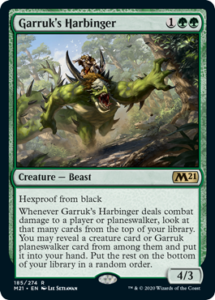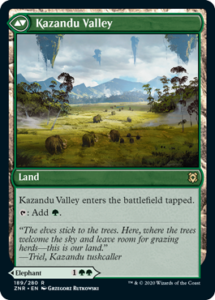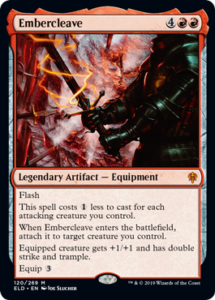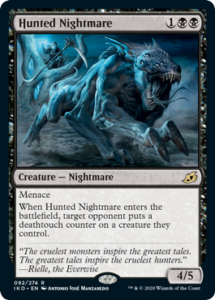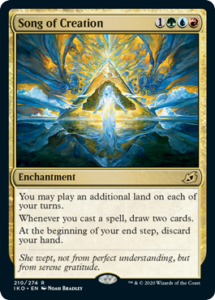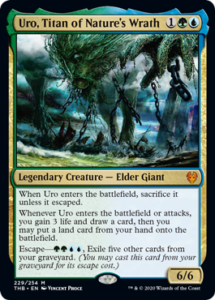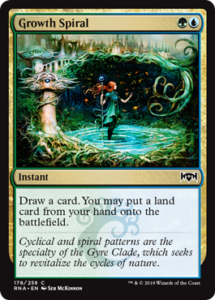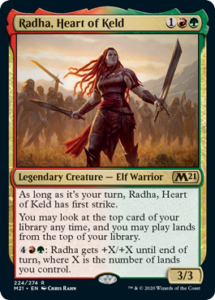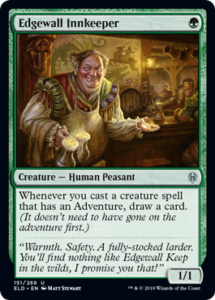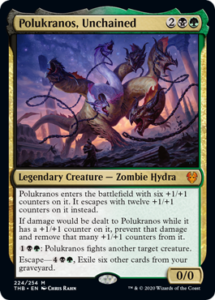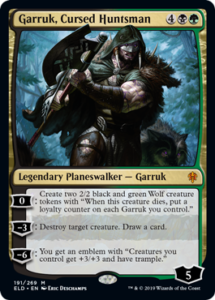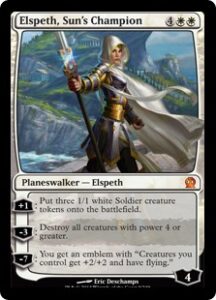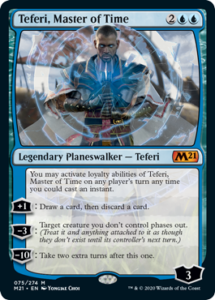Top 10 Cards That Couldn’t Make It in Standard
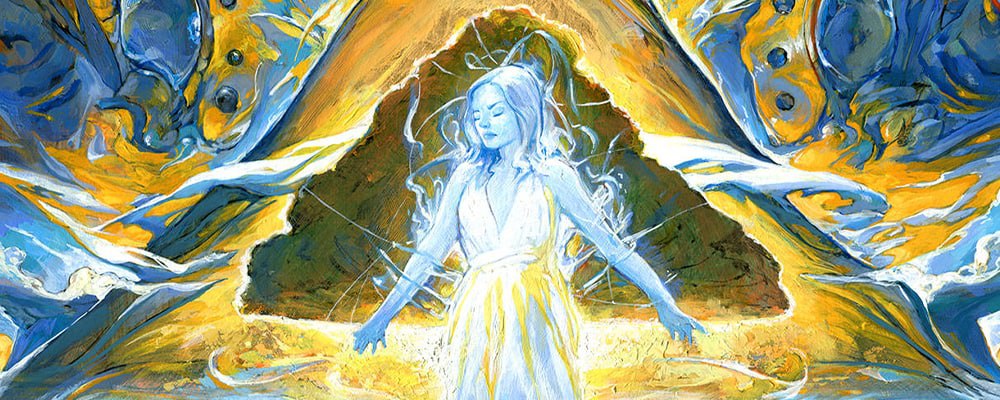
This week we move from Modern to Standard, and after talking about the well-performing Hardened Scales, we’re switching gears to look at the top 10 cards that had potential but failed to find space in the format due to the previous sets’ high power level.
10) GARRUK’S HARBINGER
With three mana, 4/3, and hexproof from black: this card is super-strong. When it does damage, you look at the top cards equal to the number of damage, and add a creature or a Garruk planeswalker. Basically it doesn’t lack anything.
It’s true that it has made a few appearances on some sideboards, but the only truth is that it had to deal with the Lovestruck Beast.
This card has the same mana cost as Lovestruck Beast yet it fails in comparison so it hasn’t found a place. Kazandu Mammoth, thanks to its versatility as a land and the great pressure it puts on the board, was the final blow to the hopes of ever seeing it played.
9) TECTONIC GIANT
This is another card that garnered far less than it could have. At first I thought it was a good card, because its three damage when it attacked put pressure and its second ability provided resources, which has always been good for red.
Mono Red decks in turn four tend to play Embercleave or Torbran to close the game, and there wasn’t room for this card due to its mana cost. As it’s a little slow, it would find a place in a midrange version, which has never existed.
8) HUNTED NIGHTMARE
This card is a three mana 4/5 menace with a single flaw of giving a deathtouch counter to an opponent’s creature, which isn’t an important negative effect. It’s strong against control decks as it puts a lot of pressure on its own, and your opponent likely won’t have a single creature on the ground.
It couldn’t even find play during the Mono Black Devotion period and was overpowered by Ayara and Woe Strider, which can sacrifice creatures and have synergy with Nightmare Shepherd. There haven’t been other decks that have taken advantage of cheap creatures of this color, so there is nothing to do for this nightmare.
7) TERROR OF THE PEAKS
We put this dragon in seventh place. It would’ve placed higher, but it was played for a short time. The card is strong. All of your opponent’s spells that target this card require three lives. It has four constitution, which is important because it prevents the card from being affected by a lot of the most played removals. It does damage to any target based on the strength of the creature you’re playing against. In short, nothing is missing.
Terror of the Peaks didn’t find a space because there isn’t a deck that maximizes the synergy and Goldspawn Dragon was printed to dominate that mana curve.
6) SONG OF CREATION
I like cards like this a lot — typical combo cards that win in turns, play lots of spells, draw a thousand cards, and then kill your opponent in some weird way.
Someone tried to make some decks with this card at the time of Uro and Growth Spiral but without much success. Comparing this deck with the decks of that time, or with the first companions when they had not yet been nerfed, was impossible.
With a format composed of much more powerful cards, Song of Creation unfortunately has never found serious space in Standard.
5) ELSPETH, SUN’S NEMESIS
If this planeswalker was printed five years ago it would have starred in the format. This is a strong card for its double ability to push damage due to the double +2+1 that gives two creatures (so a great high drop maybe in a white weenie) and for its ability to generate resources by creating two tokens. There’s also the escape ability, which is strong in this set.
It may seem beautiful, but in a format that had Uro and Nissa and where the green and blue dominated with the various versions of food, there was never room for Elspeth, which was clearly inferior to that period’s other cards.
4) RHADA, HEART OF KELD
This is an interesting drop for Gruul, which has been one of the strongest decks in recent years. A card that let you have a look at the top of the deck is already strong because it gives important info that could influence your plays. This card allows you to play the top card if it’s a land, so it takes away some draws that you may not want.
Over time RG has preferred to play the adventure package that, along with Edgewall Innkeeper, Bonecrusher Giant, and Lovestruck Beast, gave more consistency to the deck.
3) SOLEMN SIMULACRUM
This was one of the most played cards in the format in Mirrodin. Re-reading it almost twenty years later makes you smile thinking about how a card that was so strong in the past may be useless now. The power level of that time was much lower, and a card like Simulacrum wouldn’t be able to find space in any deck today.
Who would play this card when at four mana you can make a Questing Beast, a Galazeth Prismari rather than a Polukranos or a Winota — all cards that are far superior.
2) GARRUK, CURSED HUNTSMAN
This isn’t an entirely unplayed card, but it probably would have been more successful in a different time period. The comparison that comes to mind, because of the similar abilities, is Elspeth Sun’s Champion, a planeswalker that made the fortune of anyone who played it during Theros. Undoubtedly a stronger and more decisive card, both for its ability to remove multiple creatures (while Garruk only removes one) and because flying could be better than trample at the emblem level.
I can’t explain this disparity or rather the explanation is always the same. First Fires of Invention, then decks with Embercleave, various Adventures decks, and Yorion, so that finding a slot for a six-mana planeswalker was almost impossible. Even Elspeth wouldn’t find a slot today.
1) TEFERI, MASTER OF TIME
At the end is the card that has the highest power level and has not been played enough during Standard.
This card had a lot of hype since it’s a planeswalker that activates every turn and as an instant, which had never been seen at the time. It improves your hand by letting you draw and then discard a card, which is valuable for Control decks. It defends itself by making an opponent’s creature disappear until their next turn. Playing two extra turns is its final ability, which is rare and difficult to do, but allows you to win the game.
Nothing was missing here, except the right archetype to play the card. Sultai Control on turn four wants to do something else, and decks like UR Control arrived too late with cards like Galazeth Prismari that were insurmountable from the start. For the rest, blue has practically never had room for such a card.
I hope you enjoyed this throwback. Now we wait with anticipation for the upcoming rotation to give a breath of fresh air into the Standard format!
Image Copyright: (c) 1995-2020 Wizards of the Coast LLC, All Rights Reserved





